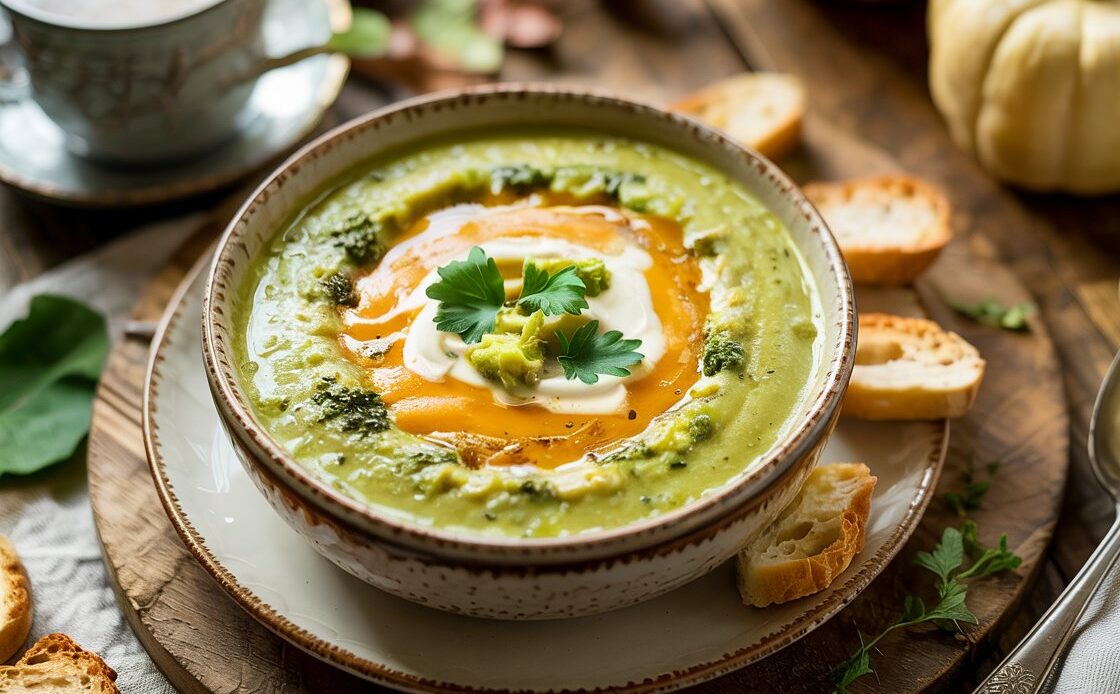
Broccoli cheddar soup is the ultimate comfort food—creamy, cheesy, and soul-warming in every spoonful. But if you’ve ever ended up with a watery, grainy, or bland bowl, you know it’s not as foolproof as it looks. The truth? Making that rich, velvety texture takes more than just tossing broccoli and cheddar into a pot. In this post, we’re revealing the real secrets behind thick and creamy broccoli cheddar soup—the kind that hugs your taste buds and feels like a cozy night in. No fluff, just practical techniques, pro tips, and creative touches you’ll actually want to try.
Why Broccoli Cheddar Soup Should Never Be Watery
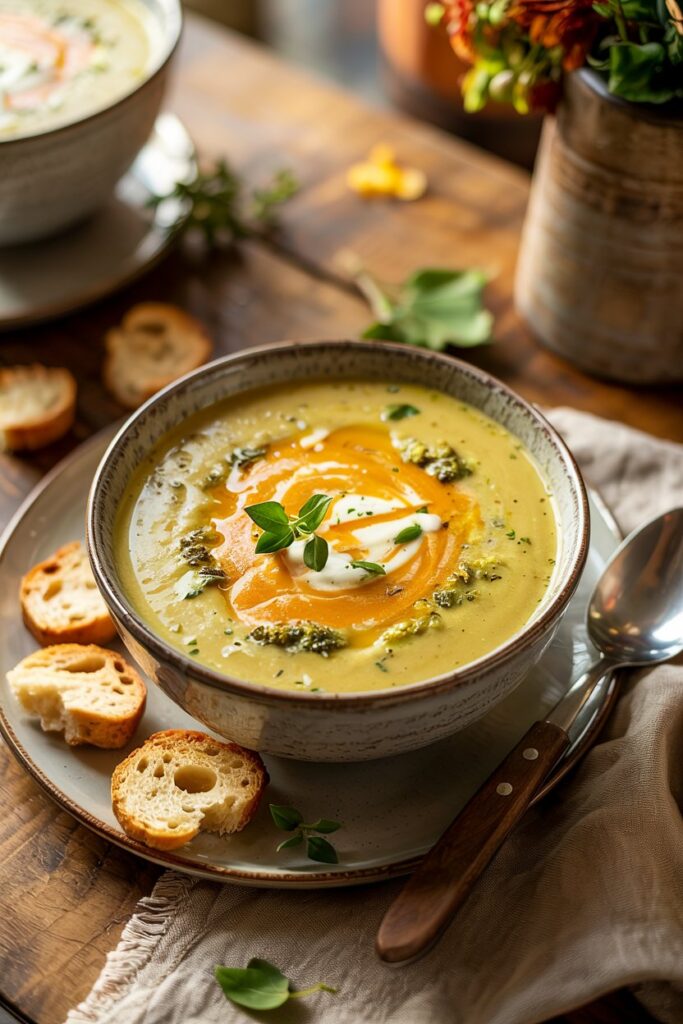
A watery broccoli cheddar soup is disappointing, leaving you with a bland, unappetizing bowl. The key to a great soup is its texture. When done correctly, broccoli cheddar soup should have a thick, creamy consistency that complements the cheesy, savory flavor. Achieving that perfect consistency is what separates a good soup from a great one.
The Science Behind Creamy Soups
The secret to a smooth, velvety soup lies in the emulsification process. Emulsification occurs when fats in the cream or cheese combine with the liquid (broth or water), creating a stable, creamy texture. Without it, the soup can easily separate, leaving you with a thin, unpleasant broth. The right balance of fat, liquid, and thickening agents is essential for a rich, creamy soup that holds its flavor.
What Usually Goes Wrong (and How to Avoid It)
Several factors can ruin the texture of your soup. Overcooking the broccoli can break it down too much, causing the soup to become mushy and watery. A watery base often occurs when you add too much broth or don’t properly thicken the soup. Finally, cheese can split if added too quickly or at too high a temperature. To avoid these issues, cook your broccoli just enough to retain its texture, use the right amount of liquid, and add cheese gradually over low heat to prevent separation.
3 Chef-Approved Methods to Thicken Broccoli Cheddar Soup
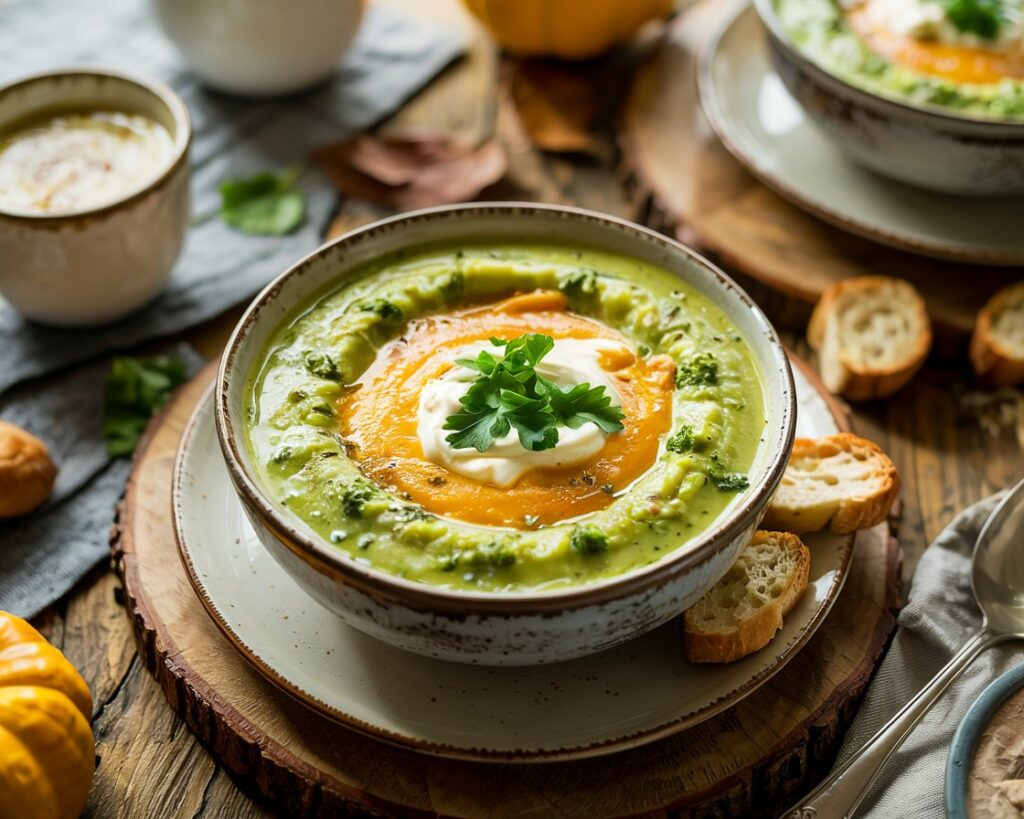
This section reveals the top techniques used by chefs to achieve a perfectly thick, creamy broccoli cheddar soup. Whether you’re looking for a traditional method or a lighter, healthier approach, there’s something here for every type of home cook.
Method 1 – The Classic Roux
A roux is the foundation of many thick soups. It’s a simple mixture of butter and flour, cooked together to create a paste. This paste acts as a thickening agent when combined with broth and cheese.
- Butter to flour ratio: The standard ratio is 1:1. For every tablespoon of butter, use 1 tablespoon of flour.
- When to add broth: Gradually whisk in the broth after the roux has been cooked to prevent lumps.
- Timing for cheese: Add cheese only once the soup has thickened, to ensure it melts smoothly without separating.
Method 2 – Blended Veggies
Blending vegetables like broccoli, carrots, and onions adds natural thickness without the need for flour or cream. This method is cleaner, gluten-free, and adds a nutrition boost to your soup.
- Broccoli, carrots, onions: These vegetables naturally thicken the soup as they blend into a smooth texture while still adding flavor.
- Cleaner & nutrient-rich: This method is ideal for those avoiding flour or cream, offering a lighter, healthier alternative.
Method 3 – Creams, Cheeses & Cornstarch
When you want a rich, indulgent soup, using heavy cream or cream cheese is an easy way to achieve creaminess. Cornstarch can also be used as a backup to help thicken the broth when needed.
- Heavy cream & cream cheese: These ingredients will create a velvety texture but be cautious with the amount to avoid making the soup too thick or greasy.
- Cornstarch: Mix cornstarch with a little cold water and add it to the soup to thicken it quickly without affecting the flavor.
📊 Insert Table:
| Thickening Method | Pros | Best For | Notes |
|---|---|---|---|
| Roux | Classic, stable | Traditional recipes | Requires flour |
| Blended Veggies | Healthy, gluten-free | Clean eating | Slightly less creamy |
| Cream + Cheese | Rich flavor | Comfort food lovers | Watch for splitting |
Choosing the Right Cheese (It’s a Bigger Deal Than You Think)
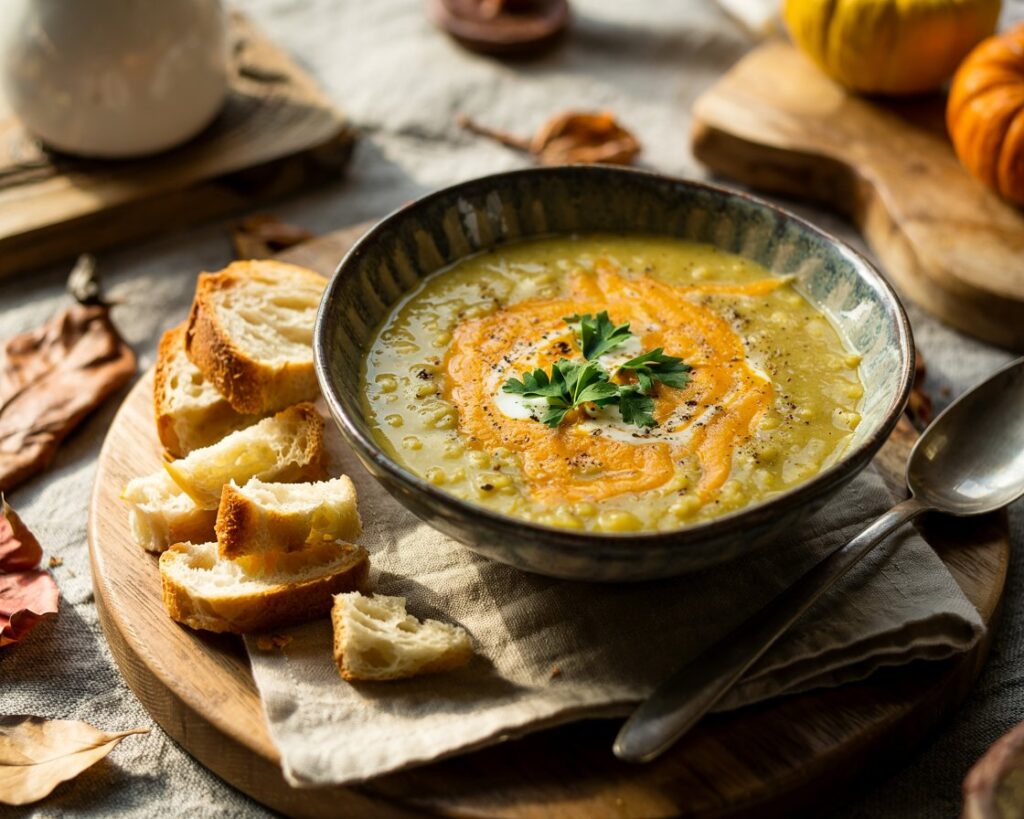
Most people think any cheddar will do, but the cheese you choose has a major impact on the flavor and texture of your soup. Let’s dive into the nuances that make a difference.
Sharp, Mild, or White Cheddar?
When it comes to cheddar, flavor intensity and meltability are key factors. Sharp cheddar provides a bolder, tangier taste, which can balance the richness of the soup. Mild cheddar offers a smoother, more subtle flavor, allowing the broccoli to shine. White cheddar, on the other hand, tends to have a smoother melt and a creamier texture, making it ideal for a velvety finish.
- Aging: Aged cheddar has a firmer texture and more intense flavor, while younger cheddar is creamier and melts more easily.
- Brand Differences: Not all cheddars are created equal. Some brands have a smoother, richer melt, while others may separate or become grainy.
Pre-Shredded vs. Block Cheese
While it’s convenient, pre-shredded cheese often contains anti-caking agents, which can prevent it from melting smoothly. These agents can cause the cheese to clump together or form an unpleasant texture when added to your soup. For the creamiest, smoothest soup, opt for freshly grated cheese from a block.
- Why block cheese is better: It melts more evenly and results in a creamier soup. Freshly grated cheese also allows for more control over the amount of cheese used.
Bonus Cheeses to Try (If You’re Feeling Fancy)
If you want to take your soup to the next level, consider adding a mix of cheeses.
- Gruyère: This Swiss cheese adds a nutty, rich flavor and melts beautifully.
- Fontina: With its buttery, strong taste, fontina creates a smooth texture when melted into the soup.
- A little Parmesan: Adding a small amount of Parmesan boosts the soup’s umami depth, enhancing the overall flavor without overwhelming it.
How to Serve It Like a Pro (Because Presentation Matters Too)
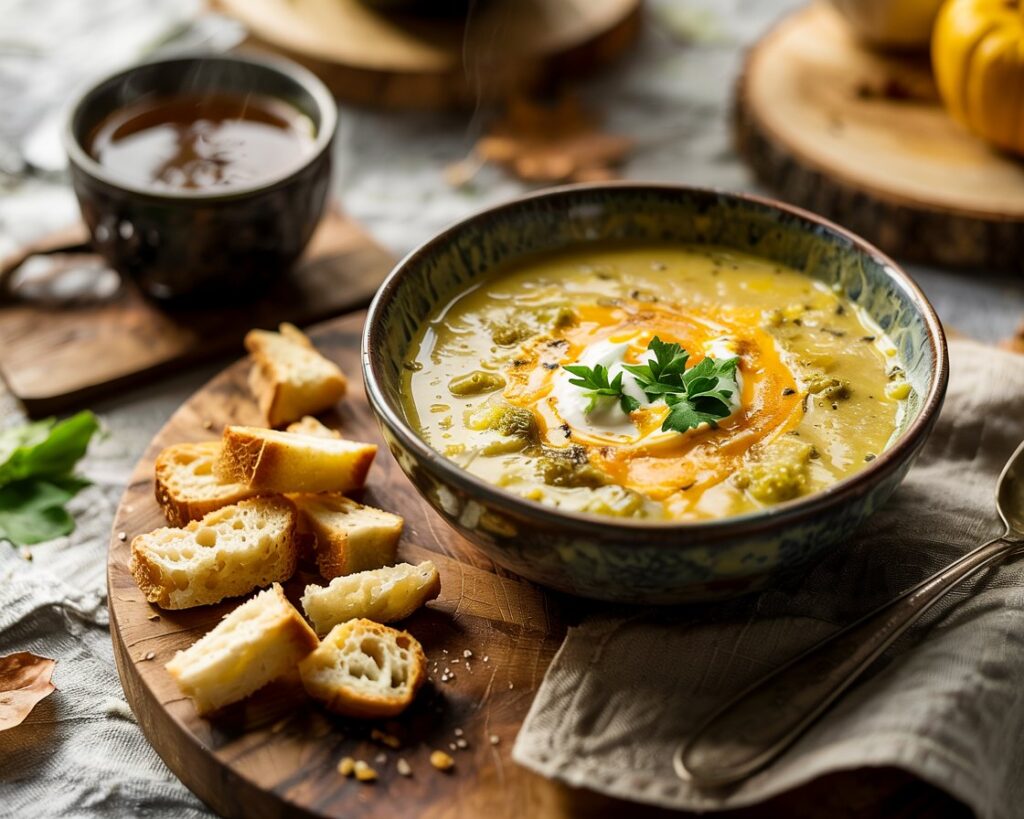
Great soup is about more than just flavor—it’s also about how you present it. From garnishes to serving vessels, small touches can elevate your dish and make it feel like a five-star meal.
Best Garnishes and Toppings
Garnishing your broccoli cheddar soup not only adds visual appeal but enhances the flavor and texture. Here are a few ideas to make your soup stand out:
- Toasted croutons: Add a crunchy contrast to the creamy soup. Opt for homemade croutons for extra flavor.
- Fresh parsley: A sprinkle of fresh herbs brightens up the dish and adds a touch of color.
- Extra grated cheddar: For those who can’t get enough cheese, an extra dusting of freshly grated cheddar adds richness and visual appeal.
- Swirl of cream: A small swirl of cream or sour cream creates an elegant, creamy finish that complements the soup’s flavor.
Soup Vessels That Make a Difference
The vessel you serve your soup in can completely change the experience. While any bowl will do, certain choices make the soup feel more special:
- Bread bowls: A classic, rustic choice that turns the soup into a meal. It soaks up the soup’s richness, adding texture and flavor.
- Mugs: Ideal for a cozy, casual setting. The handle makes it easy to sip and adds charm.
- Rustic ceramic bowls: For an artisanal touch, opt for handcrafted ceramic bowls. They add warmth and character to the meal, making it feel more personal and inviting.
What to Serve With Broccoli Cheddar Soup
Pairing the right sides with your soup can create a well-rounded meal. Here’s a table with some of the best options:
📊 Pairing Table Example:
| Side Dish | Why It Works | Pro Tip |
|---|---|---|
| Garlic Bread | Crunch vs cream | Toast it with butter + herbs |
| Apple Walnut Salad | Sweet/savory contrast | Add goat cheese for elegance |
| Roasted Veggies | Complements the rich flavors | Use seasonal picks like squash |
Leftovers? Here’s How to Reheat Without Ruining It
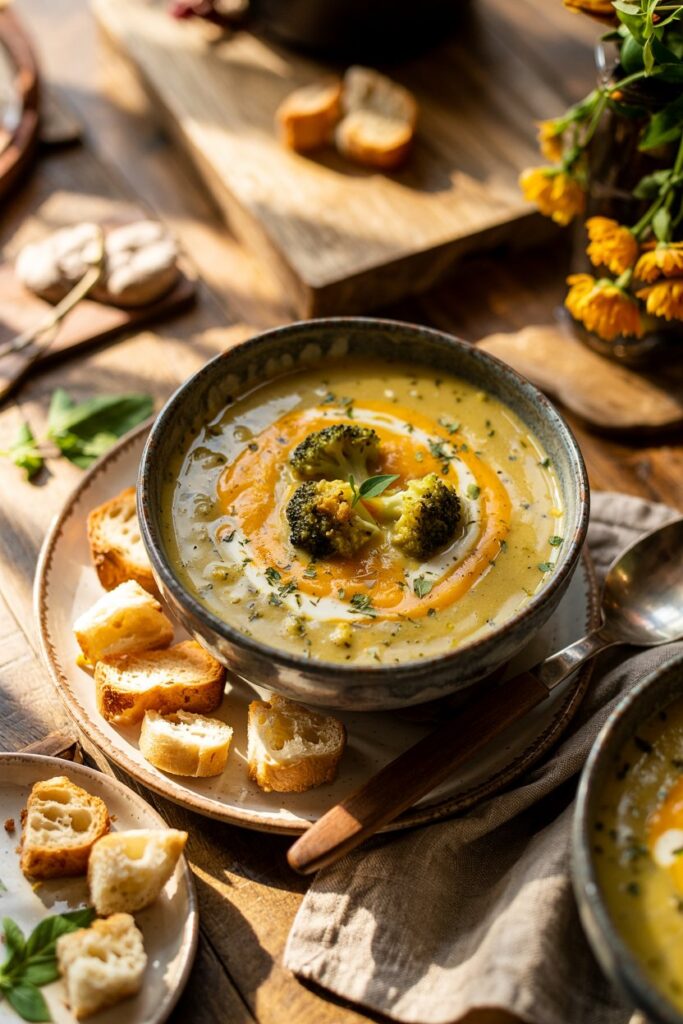
Broccoli cheddar soup can be just as comforting on day two, but reheating it the wrong way can turn it into a separated, grainy mess. Follow these tips to ensure your leftovers taste just as good as when they were first made.
Reheating Cream-Based Soups the Right Way
When reheating cream-based soups like broccoli cheddar, the main concern is preventing the cheese from separating or the soup from scorching. Here’s how to do it right:
- Stovetop: This is the best method to retain smoothness. Heat the soup over low to medium heat, stirring frequently to ensure even warming. Add a splash of broth or milk if it thickens too much.
- Microwave: If using the microwave, heat in 30-second intervals, stirring after each. This prevents the soup from heating unevenly and reduces the risk of scorching.
- Avoid high heat: High heat causes the cheese to split and the soup to curdle. Low and slow is the way to go.
Can You Freeze It?
Yes, you can freeze broccoli cheddar soup, but it’s important to follow the right steps to maintain the best texture when reheated.
- Texture changes: Cream-based soups can become grainy or separated after freezing. To minimize this, omit the cheese before freezing and add it fresh when reheating.
- Freezing in batches: Freeze the soup in small portions to avoid thawing and refreezing, which can affect the flavor and texture. Use airtight containers or freezer bags for best results.
- Reheat carefully: When reheating frozen soup, do so gently over low heat on the stovetop, adding a bit of cream or broth to restore the creamy texture.
Broccoli Cheddar Soup Success Checklist
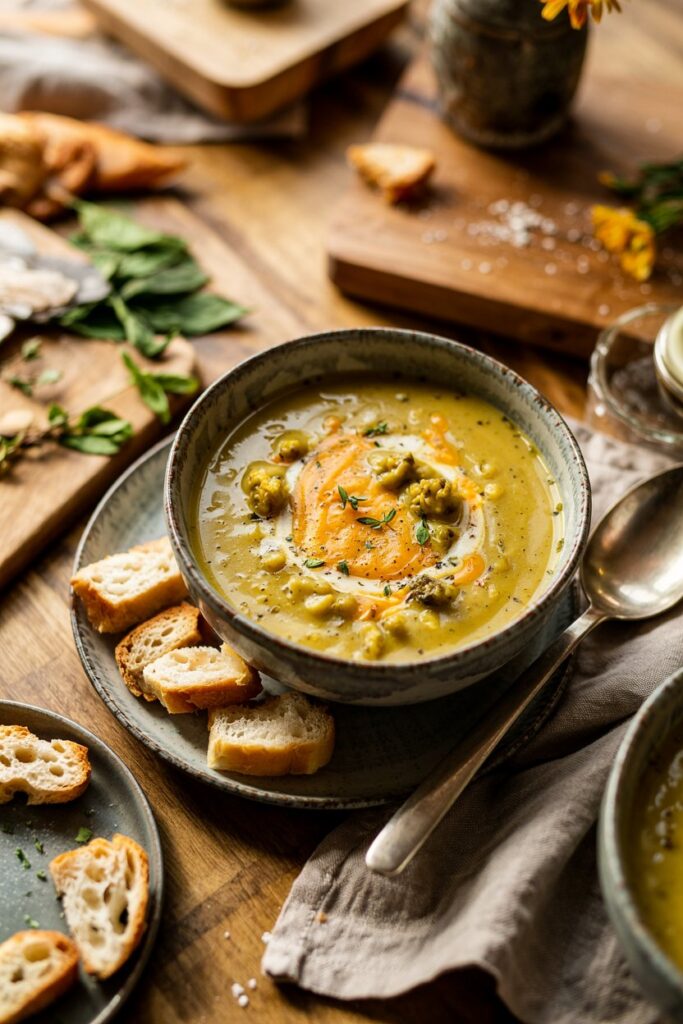
For the best results, follow this handy checklist to ensure your broccoli cheddar soup is always a creamy, cheesy masterpiece:
🧀 Broccoli Cheddar Soup Success Checklist
✅ Use a roux or blended veggies for thickness – Choose a classic roux for a stable base or blended veggies for a healthier, gluten-free alternative.
✅ Shred your own cheese – Avoid pre-shredded cheese to ensure smooth, even melting.
✅ Go slow with cream – Add cream gradually to control the texture and prevent curdling.
✅ Garnish smart, serve fresh – Add flavor and visual appeal with simple garnishes like croutons or fresh herbs.
✅ Reheat gently to avoid grainy texture – Always reheat on low heat, either stovetop or microwave, to keep the soup creamy.
Nutrition Facts
| Nutrient | Amount per Serving (1 cup) |
|---|---|
| Calories | 350 |
| Total Fat | 25g |
| Saturated Fat | 15g |
| Cholesterol | 60mg |
| Sodium | 800mg |
| Total Carbohydrates | 20g |
| Dietary Fiber | 3g |
| Sugars | 5g |
| Protein | 16g |
Perfect Your Broccoli Cheddar Soup Every Time
Mastering broccoli cheddar soup isn’t just about following a recipe; it’s about understanding the nuances of texture, flavor, and presentation. By using the right thickening methods, choosing the best cheese, and following proper reheating techniques, you’ll always create a bowl of soup that’s both comforting and creamy.
For a complete meal, try pairing your soup with a delicious Garlic Bread, a perfect complement to your rich and hearty soup.


